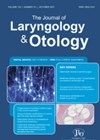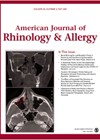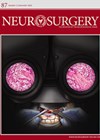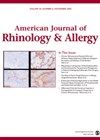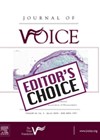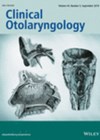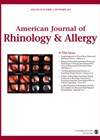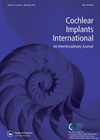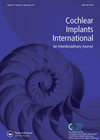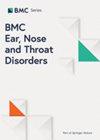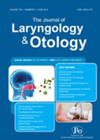
Journal Reviews
Role of maxillary sinus irrigation as an adjuvant to current management of chronic rhinusitis without polyposis
Several decades have passed since irrigation of maxillary sinuses generally became a treatment of the past. A more recent concept of biofilms may have evoked new interest in this past procedure, fraught with its own issues. In this study, the...
CRS vs. migraine: which is the culprit in most headaches?
‘Sinus headache’ is a common diagnosis according to patients and primary care physicians, but relatively infrequent in the eyes of otolaryngologists. This study examines 104 patients with a primary headache syndrome (PHS) and 130 patients with CRS, looking at SNOT-22...
OSA is neuroprotective!
This interesting study supports the hypothesis of the protective effects of obstructive sleep apnoea (OSA) against ischemic events like stroke. The authors evaluated the impact of OSA with the presentation, hospital course and outcomes of patients with subarachnoid haemorrhage (SAH)....
Can we avoid FESS in patients with true isolated odontogenic sinusitis?
This is a useful study looking at how best to manage patients with odontogenic sinusitis and if FESS can be safely avoided. The authors treated patients by removing the odontogenic cause of the rhinosinusitis by extracting the offending tooth and...
Vocal fold motion impairment following intubation – how likely is it to recover?
Ed’s Choice reviews a timely paper investigating prolonged intubation on vocal fold motion. The current scientific literature is dominated by studies examining COVID-19 and its widespread effects on health and healthcare delivery but will be old news by the time...
Is the greater auricular nerve important in parotid surgery?
The greater auricular nerve (GAN) is often partially or totally sacrificed during parotidectomy procedures. This was a retrospective study comparing auricular sensation and quality of life in patients that either had their GAN preserved or sacrificed. In the shortterm, patients...
SNOT-25 to assess CRS - a new tool
The SNOT-22 is a well-established validated instrument, designed to evaluate the rhinosinusitis-specific health status and health-related QOL, however makes only one broad reference to productivity. The objective of this paper is to evaluate a modified SNOT-25 created to better assess...
The paediatric dilemma of one ear in and one ear out of NICE criteria
The auditory implant team in Manchester have implanted a cohort of children where audiological thresholds meet the NICE guidance for cochlear implantation (CI) in one ear only, and the other falls into moderate, severe or sloping loss. These children are...
Cochlear implantation in children with cognitive disabilities
Additional disabilities are frequently encountered in children born with hearing loss or deafness. A study from Denmark attempted to systematically review to what extent hearing-impaired children with cognitive disabilities benefit from cochlear implantation. The authors conducted an extensive search in...
A review of endoscopic sinus surgery outcomes
This review discusses the outcome measures that may be considered in the assessment of patients with chronic rhinosinusitis (CRS) as well as the outcomes of endoscopic sinus surgery (ESS) published so far. The authors also discuss the role of peri-operative...
Does teaching affect patient satisfaction?
Teaching practice on real patients has several advantages in terms of lower costs and genuine clinical material but it is often a concern that using real patients for undergraduate teaching may result in patient dissatisfaction and many patients would prefer...
Long-term outcomes after (adeno) tonsillectomy
Patient-reported outcome measures (PROMs) are used increasingly to fill an ‘evidence gap’ where healthcare rationing threatens particular treatments. Tonsillectomy is a long-established and effective treatment for recurrent tonsillitis and obstructive sleep apnoea (OSA) in children. The T-14 outcome measure examines...

